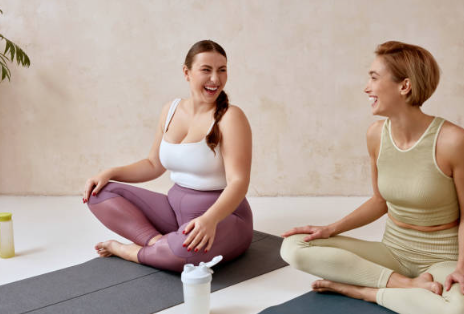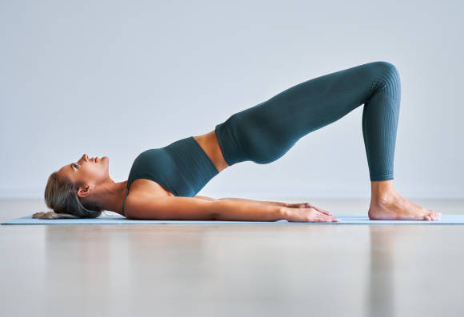Pilates is a low-impact form of exercise designed to strengthen muscles while improving posture, flexibility, and mobility. Originally called Contrology, Pilates offers a variety of physical and mental health benefits, including improved range of motion, pain relief, and enhanced muscle endurance.
Developed by Joseph Pilates in the early 20th century, this method emphasizes breath control and precise movement to help you gain better command over your body.
Typical Pilates sessions last around 45 minutes or more, though you can also practice at home in shorter 20–30 minute intervals.
The Benefits of Pilates
Pilates is gentle yet effective and is suitable for people of all ages. Whether you’re tired of your current workout routine or simply want to move more and improve flexibility, Pilates might be exactly what you need. Here are five key health benefits of practicing Pilates.

1. Improves Balance and Flexibility
If your goal is to move better in everyday life—whether it’s walking, sitting down, standing up, or lifting objects—Pilates can help. It supports functional movement by improving balance, stability, and mobility. Over time, you’ll notice smoother movement and greater control.
2. Builds Muscle Strength and Endurance
Pilates is excellent for anyone looking to improve muscular strength and stamina. The exercises require mental focus and controlled movement.
-
One study found that doing Pilates twice a week for 12 weeks significantly increased core endurance and upper body strength.
-
Another study showed that lower body strength and postural stability also improved after just a few months.
-
Research involving postmenopausal women found that Pilates helped strengthen the upper and lower body, as well as abdominal muscles.
3. Helps Alleviate Pain
Emerging research shows that Pilates may help reduce various types of pain:
-
One study on people with fibromyalgia found that those who regularly practiced Pilates experienced reduced anxiety and pain perception.
-
Pilates may even benefit pregnant women: In one clinical trial, women who did Pilates twice weekly during pregnancy had better delivery outcomes, including lower rates of cesarean sections, episiotomies, and complications. They also had lower blood pressure and greater flexibility.
4. Boosts Mental Health
Like many forms of exercise, Pilates can lift your mood and help manage symptoms of anxiety and depression. This emotional boost is partly due to the mind-body connection in Pilates and the release of endorphins, the body’s natural feel-good hormones.
In fact, a meta-analysis of eight studies found that people who practiced Pilates reported:
-
Lower levels of anxiety and depression
-
Increased vitality
-
Reduced fatigue
5. Enhances Quality of Life
Pilates is particularly beneficial for individuals with sedentary lifestyles. It’s a low-impact way to stay active and can significantly improve your overall well-being.
-
A small study of women aged 61–67 found that doing 30-minute mat and equipment Pilates workouts twice a week for six months significantly improved their quality of life.

How Pilates Differs from Yoga
While both Pilates and yoga are low-impact and emphasize the mind-body connection, their origins and goals differ.
-
Pilates was developed by Joseph Pilates for dancers and athletes recovering from injury. It focuses on core strength, spinal alignment, and controlled movement.
-
Yoga, which originated in India thousands of years ago, is more focused on meditation, spiritual awareness, and breath-centered postures.
Both improve flexibility and strength, but:
-
Pilates is often better for rehabilitation and core development.
-
Yoga may provide greater cardiovascular benefits, especially in faster-paced styles like vinyasa or power yoga.
You don’t have to choose one over the other—many people benefit from doing both.
Starting Pilates at Home
If you’re new to Pilates, practicing at home is a great way to see if it’s a good fit before committing to a class or gym membership. There are plenty of online resources and videos that guide you through beginner-friendly routines.
Here are a few simple Pilates exercises to try:
🔹 The Hundred
One of the most iconic Pilates exercises, the Hundred involves extending your legs and pulsing your arms while breathing rhythmically. It’s often used as a warm-up.
How to do it:
-
Lie on your back, arms at your sides.
-
Lift your head, neck, and shoulders off the mat and raise your legs to a comfortable height.
-
Engage your core and keep your lower back pressed into the mat.
-
Pump your arms up and down while inhaling for 5 counts and exhaling for 5 counts.
-
Repeat the breathing pattern 10 times (100 total arm pulses).
🔹 Shoulder Bridge with Leg Lift
This move targets your back, hamstrings, inner thighs, and obliques.
How to do it:
-
Lie on your back with knees bent.
-
Arms should be by your sides, palms down.
-
Lift your hips to form a bridge, then raise one leg toward the ceiling.
-
While keeping your hips lifted, move the raised leg out to the side, then bring it back to center.
-
Keep your pelvis stable throughout—no tipping.
-
Do 15–20 reps per leg.
🔹 Supported Roll Back
Great for beginners looking to strengthen their abs before attempting full roll-ups.
How to do it:
-
Sit upright with knees bent and feet flat on the floor.
-
Place your hands behind your thighs.
-
Relax your neck and drop your shoulders.
-
Engage your core and slowly roll back until your lower back touches the mat.
-
Don’t lift your feet. Pause, then return to seated.
-
Maintain a “C-curve” in your spine throughout.
🔹 Roll-Up
A more advanced version of the roll back—great for deep core work, but avoid it if you have back issues.
How to do it:
-
Lie flat with legs extended and arms reaching overhead.
-
Inhale to prepare, then exhale slowly as you roll up, one vertebra at a time.
-
Reach toward your toes, keeping your spine rounded.
-
Inhale at the top, then slowly roll back down.
-
Repeat 6 times.
Final Thoughts
If you’re looking for a low-impact, bodyweight workout to build core strength and improve functional movement, Pilates is a fantastic choice. Its health benefits include better posture, increased endurance, mood enhancement, and pain relief.
You can start Pilates from the comfort of your home with just a mat and a few guided exercises. However, it’s wise to check with your healthcare provider before starting—especially if you have any underlying conditions. They can help you determine whether Pilates is safe and suitable for you.